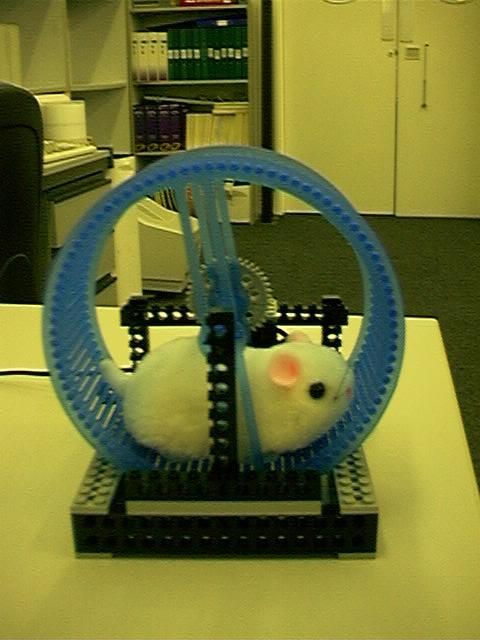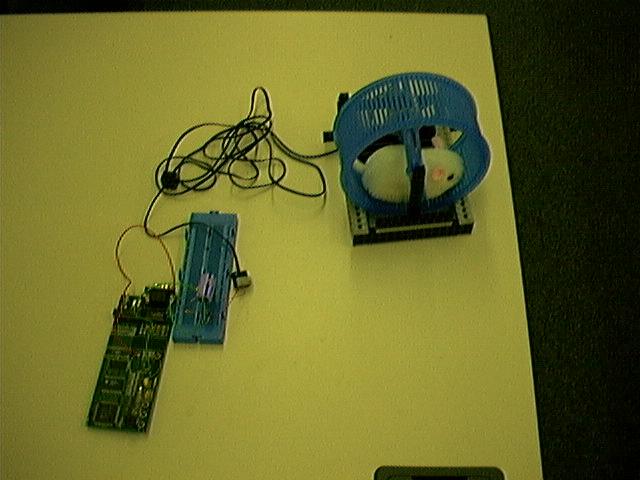Mouse Powered Amulet
The Amulet
The Amulet2e
is a asynchronous implementation of the ARM
processor capable of 40 Dhrystone MIPS with a Core power efficiency of
290MIPS/watt. As it is asynchronous it will change speed dependant on the
voltage supplied. Normal operation is at 3.3v but the processor will work
correctly down to 1v.
The Mouse
As a real live mouse is not a very reliable piece of equipment we chose
to buy a toy mouse (No longer available in the shops!). The mouse runs
quite slowly and not in a straight line.
The Setup
The mouse wheel was connected to a LEGO
motor and generated about 4v but unfortunately with any load across it
it drops down to less than 2v. The mouse having wobbly wheels (the box
calls it "With Realistic Action") constantly wants to escape the wheel
and often hits the spokes of the wheel and slows it self down. At this
point the electricity generated drops down and the amulet slows down. The
oscilloscope in the background is measuring one of the I/O lines flipped
up and down in a software loop. As the mouse gets stuck the voltage drops
the the processor slows down. There are some capacitors to stop the input
voltage dropping down to 0v.

There are two video formats available. RealPlayer or MPEG.
The Future
We hope to capture one of the real rats living in the bushes outside the department and use it to power a few chips. As a mouse can generate about 1Watt so a rat should be about 2Watts thus a rat can generate 580 MIPS on Amulet2s. This is very good when compared with a processor like the Athlon which uses 60 watts(30 Rats) to produce the same speed.I am currently working on a fully Delay Insensitive MIPS compatible processor which will take even more punishment (I was thinking of sticking it in an oven at 200c and see it slow down). And it will be 30% faster than the original synchronous design.